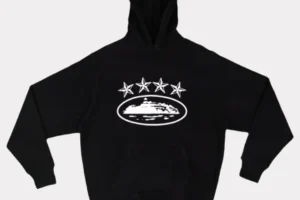In today’s competitive market, acquiring new customers is only half the battle — keeping them loyal is what drives long-term success. Loyal customers not only make repeat purchases but also advocate for your brand and contribute significantly to revenue growth. To understand and nurture this loyalty, businesses must focus on customer loyalty metrics — the measurable indicators that show how well a brand is retaining and engaging its customers.
Tracking these metrics helps businesses identify what’s working, what’s not, and where they can improve to build lasting relationships. Let’s explore the most important customer loyalty metrics, how to track them, and why they matter for every customer-centric brand.
What Are Customer Loyalty Metrics?
Customer loyalty metrics are data-driven measurements that help companies evaluate customer satisfaction, engagement, and retention. They provide insights into customer behavior, repeat purchases, brand advocacy, and the overall health of customer relationships.
By tracking loyalty metrics, businesses can:
- Identify their most valuable and loyal customers.
- Understand why customers stay or leave.
- Optimize marketing strategies for better retention.
- Measure the financial return of loyalty initiatives.
Simply put, customer loyalty metrics translate customer relationships into measurable performance indicators.
Why Tracking Customer Loyalty Metrics Is Essential
Monitoring customer loyalty isn’t just about numbers — it’s about understanding emotions, habits, and behaviors that drive repeat business. Here’s why these metrics are essential for your success:
- Retain More Customers: Understanding loyalty metrics helps you spot churn risks early.
- Increase Lifetime Value: Loyal customers spend more over time, boosting profitability.
- Enhance Customer Experience: Metrics reveal what delights or frustrates customers.
- Improve ROI: You can evaluate the real impact of your loyalty and engagement programs.
- Build Stronger Relationships: Data insights guide personalized interactions that strengthen brand loyalty.
By consistently tracking and analyzing customer loyalty metrics, companies can make smarter, data-driven decisions.
Top Customer Loyalty Metrics You Should Measure
Now let’s look at the key customer loyalty metrics that every business should track to evaluate and improve customer retention.
1. Customer Retention Rate (CRR)
Definition: The percentage of customers a business retains over a specific period.
Formula:
CRR=(Customers at end of period−New customers)Customers at start of period×100\text{CRR} = \frac{(\text{Customers at end of period} – \text{New customers})}{\text{Customers at start of period}} \times 100CRR=Customers at start of period(Customers at end of period−New customers)×100
A high retention rate means your customers are happy and keep coming back.
Tip: Build personalized engagement campaigns to encourage repeat purchases and long-term relationships.
2. Customer Churn Rate
Definition: The percentage of customers who stop doing business with you during a given period.
Formula:
Churn Rate=Customers lostCustomers at start of period×100\text{Churn Rate} = \frac{\text{Customers lost}}{\text{Customers at start of period}} \times 100Churn Rate=Customers at start of periodCustomers lost×100
A rising churn rate signals dissatisfaction or lack of engagement.
Tip: Use exit surveys or feedback tools to understand why customers leave and implement targeted reactivation campaigns.
3. Repeat Purchase Rate (RPR)
Definition: The percentage of customers who make more than one purchase.
Formula:
RPR=Repeat customersTotal customers×100\text{RPR} = \frac{\text{Repeat customers}}{\text{Total customers}} \times 100RPR=Total customersRepeat customers×100
This metric indicates how effective your customer loyalty efforts are in encouraging repeat sales.
Tip: Offer rewards, exclusive discounts, or points-based programs to drive repeat purchases.
4. Customer Lifetime Value (CLV)
Definition: The total revenue a company can expect from a single customer during their entire relationship.
Formula:
CLV=Average purchase value×Purchase frequency×Customer lifespan\text{CLV} = \text{Average purchase value} \times \text{Purchase frequency} \times \text{Customer lifespan}CLV=Average purchase value×Purchase frequency×Customer lifespan
CLV highlights the financial contribution of loyal customers and helps determine how much you can spend on retention efforts.
Tip: Segment customers by CLV and focus more resources on high-value customers.
5. Net Promoter Score (NPS)
Definition: A widely used metric that measures customer satisfaction and the likelihood of recommending your brand.
Formula:
NPS=%Promoters−%Detractors\text{NPS} = \% \text{Promoters} – \% \text{Detractors}NPS=%Promoters−%Detractors
Customers rate your brand on a scale of 0–10; those who score 9–10 are promoters, 7–8 are passives, and 0–6 are detractors.
Tip: Regularly survey customers to gather feedback and take action on areas that lower NPS.
6. Redemption Rate (for Loyalty Programs)
Definition: The percentage of loyalty rewards or points redeemed by customers.
Formula:
Redemption Rate=Points redeemedPoints issued×100\text{Redemption Rate} = \frac{\text{Points redeemed}}{\text{Points issued}} \times 100Redemption Rate=Points issuedPoints redeemed×100
A high redemption rate shows that customers find real value in your rewards system.
Tip: Simplify reward redemption and offer flexible, meaningful incentives.
7. Engagement Rate
Definition: Measures how actively customers interact with your brand — through social media, emails, apps, or loyalty platforms.
Examples of Engagement Indicators:
- Email open and click-through rates.
- Mobile app logins or activity.
- Participation in surveys or referral programs.
Tip: Create consistent, personalized engagement opportunities that keep customers involved.
8. Average Order Value (AOV)
Definition: The average amount a customer spends per transaction.
Formula:
AOV=Total revenueNumber of orders\text{AOV} = \frac{\text{Total revenue}}{\text{Number of orders}}AOV=Number of ordersTotal revenue
An increasing AOV among returning customers suggests stronger loyalty and trust in your brand.
Tip: Use loyalty tiers or bonus points to motivate larger purchases.
9. Customer Satisfaction Score (CSAT)
Definition: A measure of how satisfied customers are with your product, service, or overall experience.
Formula:
CSAT=Positive responsesTotal responses×100\text{CSAT} = \frac{\text{Positive responses}}{\text{Total responses}} \times 100CSAT=Total responsesPositive responses×100
CSAT helps identify strengths and pain points in the customer journey.
Tip: Regularly collect feedback at different touchpoints — post-purchase, after service calls, or during renewals.
10. Referral Rate
Definition: The percentage of customers who refer your brand to others.
Formula:
Referral Rate=Referred customersTotal customers×100\text{Referral Rate} = \frac{\text{Referred customers}}{\text{Total customers}} \times 100Referral Rate=Total customersReferred customers×100
A strong referral rate indicates loyal customers who actively advocate for your brand.
Tip: Encourage referrals through incentives, such as discounts or bonus points for both referrer and referee.
How to Use Customer Loyalty Metrics Effectively
Simply collecting customer loyalty metrics isn’t enough — you must analyze and act on them strategically.
1. Define Clear Objectives
Determine what you want to achieve — better retention, higher engagement, or increased revenue — before choosing which metrics to focus on.
2. Segment Your Customers
Group customers by behavior, demographics, or value to personalize your retention strategies.
3. Combine Quantitative and Qualitative Data
Pair loyalty metrics with customer feedback for a complete view of satisfaction and experience.
4. Use Data Analytics Tools
Platforms like Salesforce, HubSpot, or Power BI can help visualize metrics and generate actionable insights.
5. Optimize Continuously
Regularly review metrics, test new engagement tactics, and adjust based on real-time performance data.
The Role of Technology in Measuring Customer Loyalty
Modern analytics platforms and CRM systems make tracking customer loyalty metrics easier than ever. With AI-driven insights, businesses can predict churn, personalize offers, and automate engagement.
For instance:
- Loyalty management software helps track points, rewards, and redemption rates.
- Customer analytics tools provide detailed insights into CLV and purchase frequency.
- Sentiment analysis tools monitor brand perception and satisfaction in real time.
Integrating these systems enables businesses to measure loyalty more accurately and respond faster to changing customer behavior.
Conclusion
Understanding and tracking customer loyalty metrics is essential for every business that values long-term relationships over short-term gains. These metrics — from retention rate and CLV to NPS and engagement — provide a 360-degree view of how loyal and satisfied your customers truly are.
By measuring loyalty, you can identify your most valuable customers, improve satisfaction, and enhance the effectiveness of your loyalty programs.
In the end, data doesn’t just reveal how loyal your customers are — it shows how loyal your brand is to them. The more you invest in analyzing and acting on customer loyalty metrics, the stronger your relationships and business growth will become.

